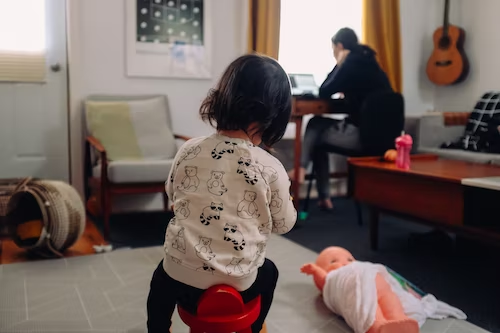6.1 Chapter Overview and Learning Objectives
In sociology, when asking questions and examining the institutions around us, we can understand norms, patterns, and issues within them. In this case, we will view society through the lens of families. Let’s start with a thought exercise. Consider these questions:
- When you imagine the word “family,” what do you think of or see?
- What is the basis of our ideas of family, and where do they come from?
- What struggles do families face in relation to society and gender?
As we have seen throughout the text thus far, social institutions are socially constructed, meaning that as a society we create their meanings and definitions. We can see this through the historical changes in family structures. From matriarchal (female-led) families to patriarchal (male-led) families to nuclear families, we now have a broader definition of what constitutes a family. Gender and sexuality play a significant role within family institutions, including gender roles, parenting, income, experiences, marriage, violence, adoption, etc.
Let’s examine the impact of the COVID-19 pandemic on gender inequality and families. Research conducted by the University of Washington Institute for Health Metrics and Evaluation found that women felt more significant adverse impacts from the pandemic than men, socially and economically. Employment and wages had the greatest effect on women, who reported higher lost work and income compared to men (Morgan et al., 2022).
These inequalities are not new , but the circumstances of the pandemic certainly exacerbated the problem. How does this information affect families? Since women assume more caregiving roles and have already dealt with pre-existing wage inequality, their careers, jobs, education, and income took a larger hit. At the same time, the lockdown and recession rocked the world. More women lost or quit their jobs to care for children and family members, further deepening the inequality.

Figure 6.1 A parent on a laptop while the child plays in the foreground during the Covid Lockdown. Women were disproportionately affected by the burden of home life, child care, as well as financial and social impacts.
6.1.1 Learning Objectives
After reading this chapter, you will be able to do the following:
- Describe concepts that are central to dating and sex from a sociological perspective.
- Summarize the process of gender socialization inside families of origin and family structures.
- Explain how gender relates to parenting roles, expectations, and experiences.
- Compare experiences of marriage and divorce across different populations.
- Examine three forms of violence commonly experienced by families.
- Outline three interventions for social change in family practice, family policy, and family education.
6.1.2 Preview of Key Terms
You will need some of these key terms to connect to ideas in this chapter and throughout this textbook. You can find the full list of key terms at the end of this chapter. This list is not exhaustive, but it begins a deeper understanding of the concepts of the construction of gender and family in the United States.
- family: a group of two people or more (one of whom is the householder) related by birth, marriage, or adoption and residing together
- gender socialization: learning the norms, roles and scripts related to genders in a society
- gender stereotyping: a child’s biological sex determines the activities and sports that they are encouraged to participate in.
- nuclear family: Two parents and their child(ren) living apart from their extended family (open sociology dictionary https://sociologydictionary.org/?s=nuclear+family
6.1.3 Licenses and Attributions for Chapter Overview and Learning Objectives
“Chapter Overview and Learning Objectives” by Heidi Esbensen is licensed under CC BY 4.0.
Figure 6.1 Photo by charlesdeluvio is licensed under the Unsplash License.

